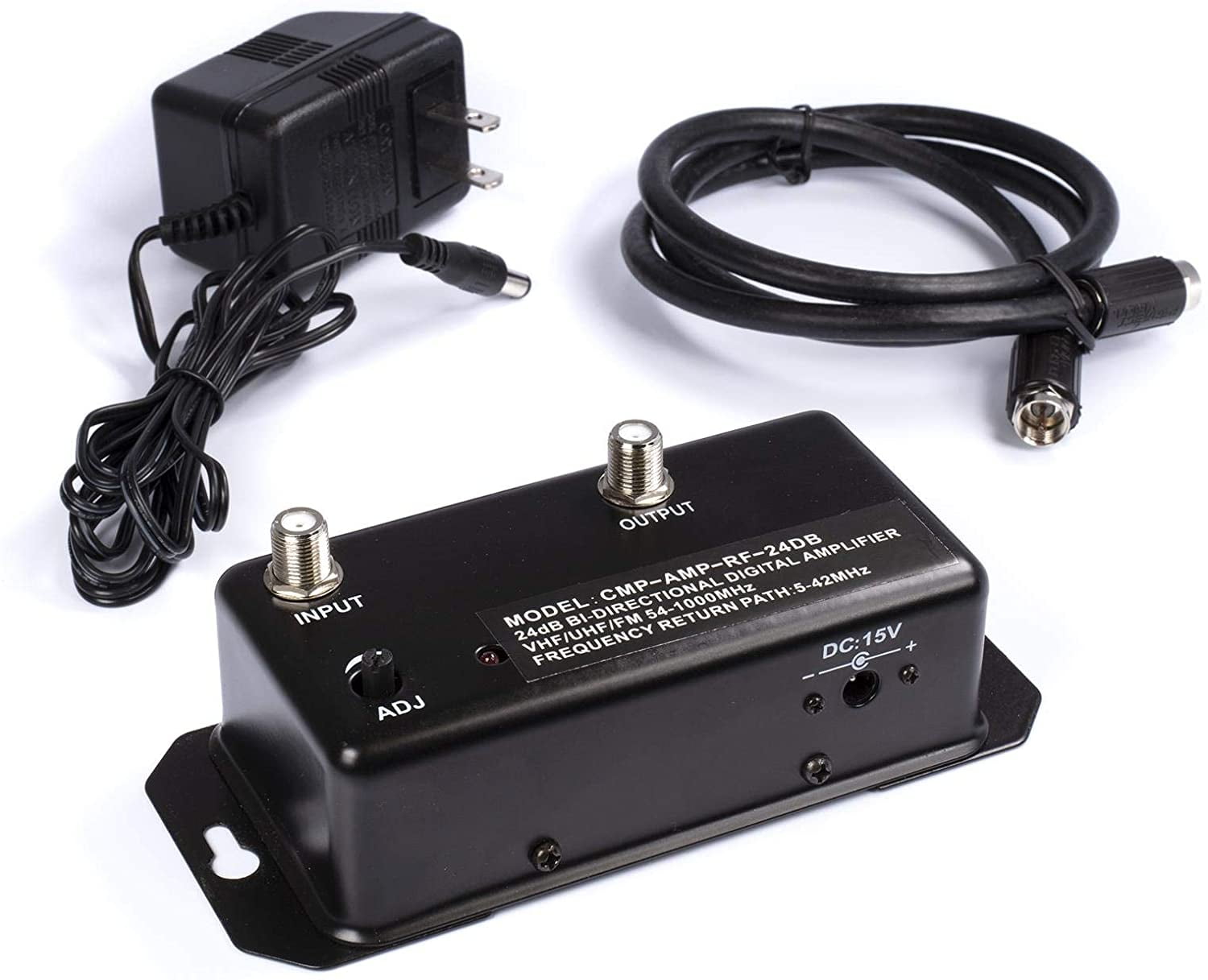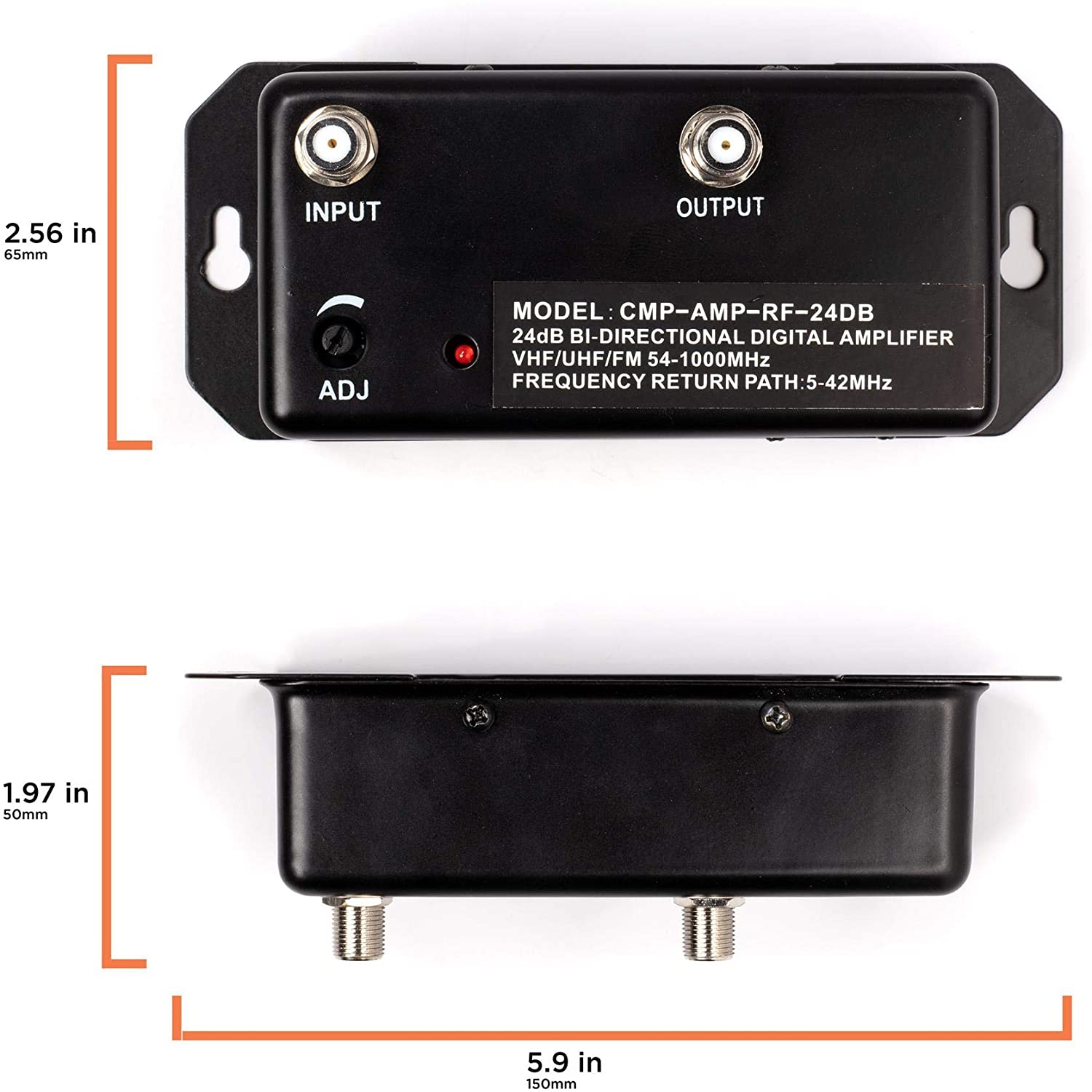
With that in mind, you should try to place your antenna as high as you can in your room (keeping in mind that you still want it near an outside-facing wall and by a window, if possible).

That’s why outdoor antennas tend to pick up so many channels.Īntenna height plays a key role in reception. Typically, the higher your antenna is placed, the better your reception will be. There’s a very important reason for this.
ANTENNA BOOSTER FOR TV TV
One of the things you’ll notice when you use the signal finder tools on TV Fool, AntennaWeb, or other similar sites is that you’ll be asked to input the estimated height of your antenna. With the Mohu Leaf, the manufacturer recommends making sure “the white side faces outside so the antenna absorbs less heat from the sun.” Also, if you’re using a flat antenna, make sure you securely tape all four corners to the window so that it doesn’t bend or warp over time as this will hamper reception. First, beware of heat absorption from the sun. Many times, this can give you the clearest line of sight to the broadcast tower, provided there isn’t a major obstruction right outside of the window, such as a big tree or your neighbor’s brick wall.Ī couple of important notes about placing your antenna in a window. That’s why placing your antenna in or near a window often yields the best results. And make no mistake–thick walls and ceilings are certainly obstructions. The fewer obstructions between your antenna and the broadcast towers, the better.

However, if you live further away from the broadcast towers, you might need a more powerful antenna with a 50-mile range or more. For instance, if most of the towers are within 30 miles, an antenna with a 30-mile range should work. It can also tell you what strength antenna you’ll need to pick up the channels in your area. Using the map, you can see which direction the tower is located in and move the antenna to the outside-facing wall that faces that particular tower. Why does this matter? Let’s say you’re having trouble picking up your local NBC affiliate. This AntennaWeb report shows that most of the transmission towers are located southwest of the home.

Find out where the broadcast towers are in your area Thankfully, there are some simple tips and tricks that will help you get optimal reception with your indoor antenna. Even the newer, more advanced “flat” antennas that are multi-directional and don’t have to be “pointed” at a precise angle, like the highly-rated, popular Mohu Leaf, can still require a little work to get positioned just right to pick up the best signal possible.
ANTENNA BOOSTER FOR TV INSTALL
For those who aren’t allowed or are unable to install an outdoor antenna on their roof, that means putting the antenna in just the right spot is more critical than ever. That’s because with a digital signal you either get a clear picture or no picture at all. After broadcasters made the switch from analog to digital back in 2009, finding a signal became a little trickier. If there’s one drawback to dusting off the old bunny ears, however, it’s that setting up your indoor antenna properly to pick up all of the stations in your area in crystal-clear HD can be challenging.


 0 kommentar(er)
0 kommentar(er)
